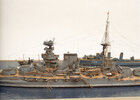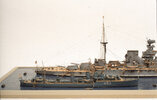Something else is missing in this discussion and that is scale. When you work in a smaller scale, there is always the danger of covering up much needed fine detail. The smaller the scale the more important this aspect of modeling becomes. To avoid this I do not prime and I mix my topcoat paint very thin, and lay down several coats to arrive at the desired finish.......just me 2 cents worth.

I understand what you are saying and, yes there is a risk of that if paint coats are layed down so they obscure detail. A very valid concern.
That said
airbrush layers of paint are very thin indeed, much thinner than a thin hand brushed coat.
Take my current build as an example.
On my 1/48 HKM Lancaster wing is very fine surface detailing, finer than you find on many 1/72 wings.
I have already sprayed:
Two coats of black primer.
Some grey preshading in places
A coat of RAF Night, sides and undersides.
Post shading in places with Tyre Black
On top of model over the primer coats, Dark Earth, post shaded with light earth and blending mist coats of DE. Then in places over that, Dark Green and then post shaded with a lighter green, plus mist coats of DG.
Tomorrow I will apply:
Painted on walk lines and roundels
Two gloss coats
A panel line wash.
Two (maybe three) matt coats.
Various other weathering treatments, pigments, streaking, exhaust smoke etc.
After that lot the surface detail will not just be visible but will be emphasised and brought out.
So I do believe that your understandable fear that fine detail will be obscured is groundless provided an
airbrush is used.
I do accept that I spray with MRP that has a particularly fine pigment and hence results in an even thinner paint layer, but I do remember that when I used Vallejo some years ago that did not hide detail either (unless I cocked up!)
While I understand your fears I do think that you have nothing to worry about. An experiment perhaps?

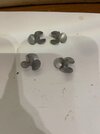
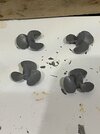
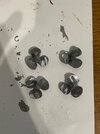


 Tell me, who sits quietly in the corner without a care of what's going on around and "pain"stakingly assembling hundred or so parts to make something that will eventually sit on the shelf gathering dust.
Tell me, who sits quietly in the corner without a care of what's going on around and "pain"stakingly assembling hundred or so parts to make something that will eventually sit on the shelf gathering dust.  The pain will come later from loads of poisonous fumes, cuts, shot eyes, constant pain in the ear from nagging...and still we prime to find flaws to do it all over again.
The pain will come later from loads of poisonous fumes, cuts, shot eyes, constant pain in the ear from nagging...and still we prime to find flaws to do it all over again. 
